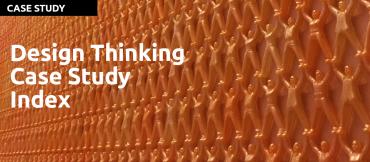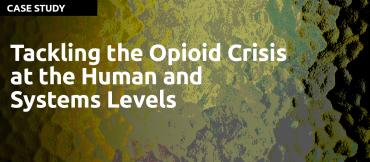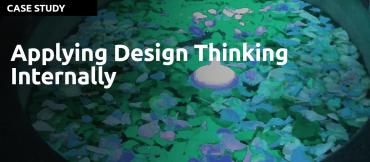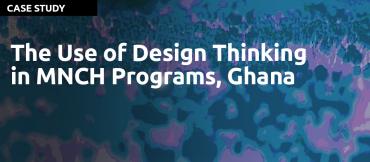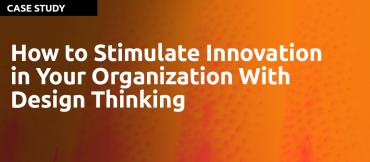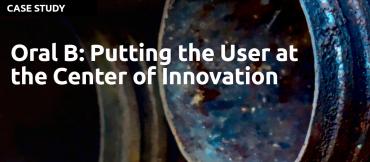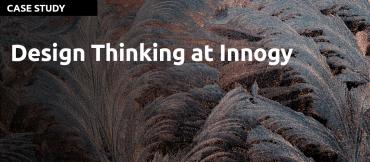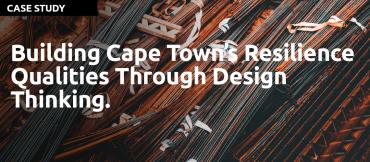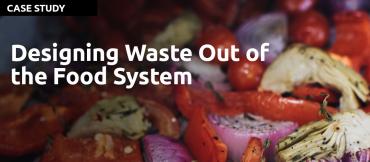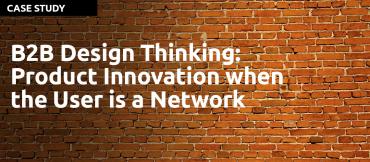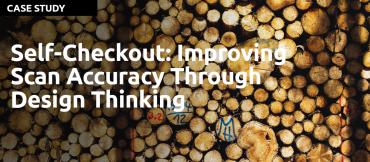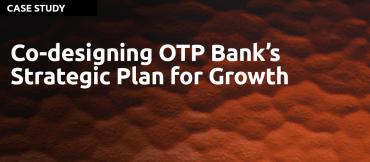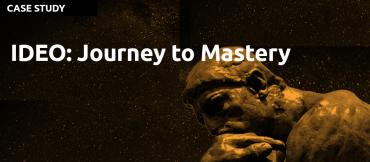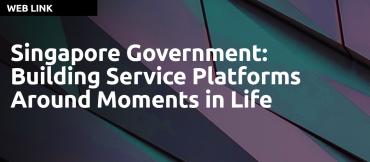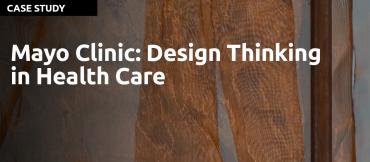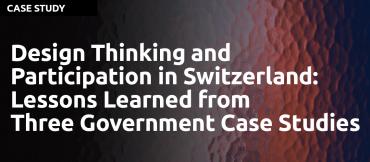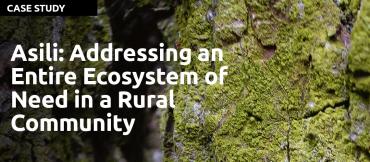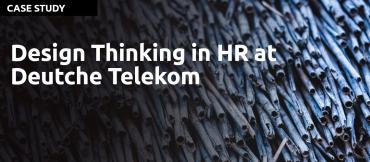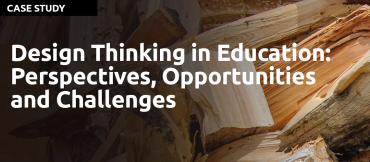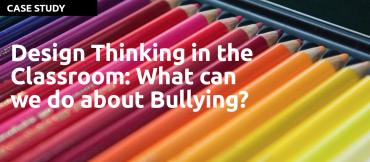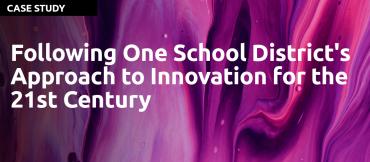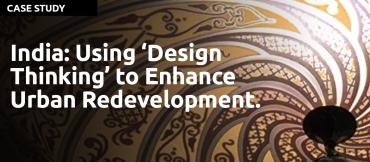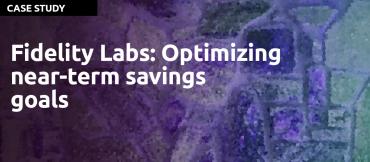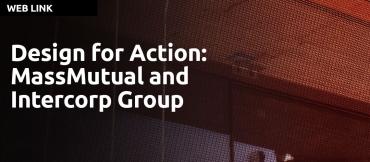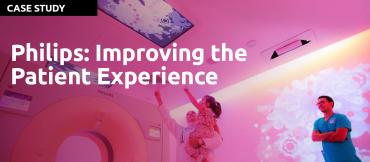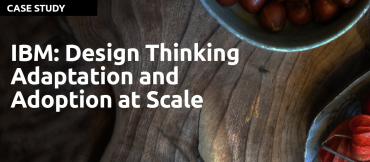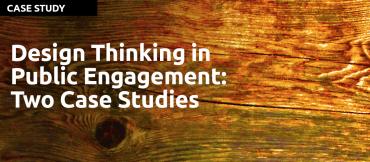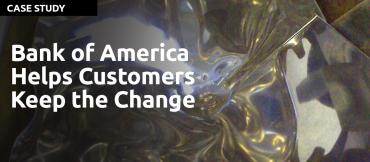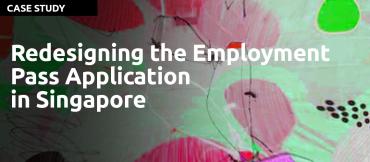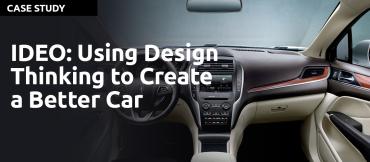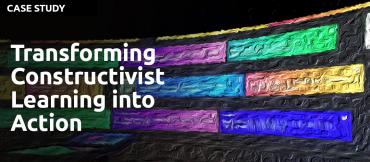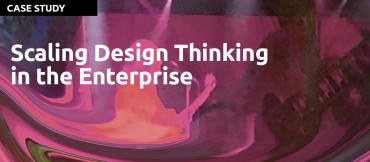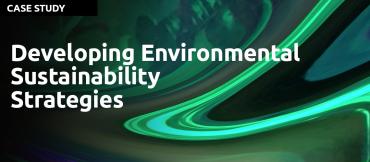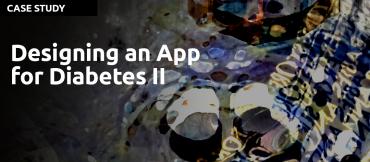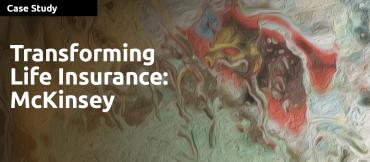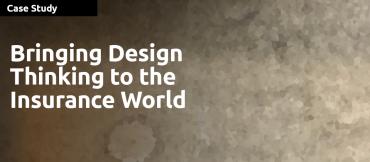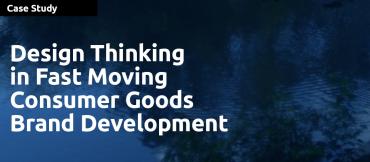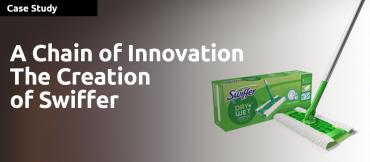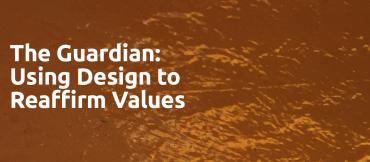
50+ Design Thinking Case Study Examples
Design Thinking Case Studies demonstrate the value of the Design Thinking methodology. They show how this Design Thinking methodology helps creatively solve problems and improve the success rate of innovation and increase collaboration in corporations, education, social impact work and the public sector by focusing on the needs of humans.
There are many Design Thinking Case Study examples on the web, but few meet the criteria for a robust case study: a clear description of the methodology, steps undertaken, experimentation through rapid prototypes and testing with people and finally documented results from the process. In this section, we have been selective about the design thinking case study examples that we highlight. We look for Design Thinking Case Studies that demonstrate how a problem was tackled and wherever possible the results or effect that the project produced. Our goal in curating this section of Design Thinking Case Study examples is quality over quantity.
Browse this page to view all Design Thinking Case Study examples, or if you are looking for Design Thinking Case Studies in a specific industry or marketing vertical, then rather start with the Design Thinking Case Studies Index.
If you have an interesting application of Design Thinking that you have a case study for, we would be happy to publish it.
Submit your Design Thinking Case Study for publication here.
Design Thinking Case Study Index
Welcome to the Design Thinking Case Study Index. There are many Design Thinking Case Studies on the internet. Many are retrofitted descriptions of what occurred, rather than evidence of the Design Thinking process in action. In order to bring a higher standard to the practice of Design Thinking, we require stronger evidence and rigor. Only members can post and must provide strong evidence in the Design Thinking Case Study that the Design Thinking process was used to create the original idea for the product or service solution. The criteria that needs to be proved to make your project a Design Thinking Case Study are:
The Guardian: Benefits of Design Thinking
Design thinking helped The Guardian newspaper and publishing group change their funding model, boost revenue and adapt their culture and engage on an emotional level with their readers. In this case study, Alex Breuer, Executive Creative Director and Tara Herman, Executive Editor, Design explain how design thinking was able to achieve these goals for The Guardian.
Tackling the Opioid Crisis at the Human and Systems Levels
How the Lummi Tribal clinic used design to address opioid overdoses
Applying Design Thinking Internally
Applying Design Thinking internally, within a group, community or to ourselves. This is a new application of the Design Thinking Methodology.
An internal application in this sense can have two meanings. First, the internal application of design thinking tactics within a group, organization or community, and second, the internal application of design thinking to one’s own self and life.
Can Design Thinking help you solve your own problems?
The Use of Design Thinking in MNCH Programs, Ghana
Responding to growing interest among designers, global health practitioners, and funders in understanding the potential benefits of applying design thinking methods and tools to solving complex social problems, the Innovations for Maternal, Newborn, and Child Health (MNCH) Initiative (Innovations) developed and piloted innovative interventions to address common barriers to improving the effectiveness of basic MNCH health services in low-resource settings.
Société Générale's Time Tracking Nightmare Solved
In 2017, employees, managers, and partners of Société Générale Global Solution Centre agreed that invoices based on time tracking and project allocation were a chronic and painful challenge.
At SG-GSC, customers were billed for the time each assigned employee worked. The process of collecting the time worked by those employees (HCC) was a complicated and difficult ordeal. It consumed 21 days per month for senior employees. These employees had to navigate different systems, many types of contracts, high staff mobility, and a variety of processes between business lines.
How to Stimulate Innovation in Your Organization With Design Thinking
In this use case the cities of Aalborg and Rotterdam share their findings obtained from design thinking initiatives. This is based on empirical research as part of an evaluation. The use case is written for other professionals in the field of design in public organizations.
One of the main targets of the Interreg NSR project Like! is to create a digital innovative culture in which citizens are engaged, and more inclusive services are build. To reach this the municipalities started several initiatives with design thinking. In these initiatives one of the objectives was to find out how design thinking can help us to develop innovative and inclusive services. To research what design thinking contributed, we evaluated the pilots with participants.
The Impact of Design Thinking on Innovation: A Case Study at Scania IT
Organizational culture represents a crucial factor for the introduction of innovation throughout the organization via Design Thinking and agile way of working. Thus, the organization must establish a culture that encompasses a shared vision with values that create a commitment to learn, experiment and accept failure.
Oral B - Putting the User At the Center of Innovation
Oral B wanted to integrate digital technology into their electric toothbrush. The Brands first thoughts were to help users to track how well they were brushing their teeth. Future Facility, a product design firm in the UK suggested a different approach. Focus on the pain points of electric toothbrush users.
This case study discusses the importance of placing the user at the center of your innovation activities.
Design Thinking at Innogy
eCarSharing: Energy Solutions for the New Generation
In 2015, Itai Ben-Jacob pitched his own ideas for a viable business model and developed the idea for innogy’s eCarSharing project in a design thinking workshop. His goal was to explore one of innogy’s innovation focus areas, ‘urban mobility.’
Together with fellow innovation hub members he organized a series of design thinking workshops to wade through the expansive topic of urban concepts – one of them focusing on mobility: “We wanted to understand urban mobility – what does it actually entail? What type of business should we start?“
Building Cape Town’s Resilience Qualities Through Design Thinking.
This case study focuses on a Design Thinking Workshop for primary school learners. The aim of the workshops was to provide learners with a new set of skills which they can employ when problem solving for real world challenges.
Building resilience is essential for cities that face increasing uncertainty and new challenges that threaten the well-being of its citizens. This is especially important when looking at the diversity and complexity of potential shocks and stresses.
Cape Town’s efforts to build skills in design thinking supports the creation of locally-relevant and innovative solutions that contribute to building resilient individuals and communities in Cape Town.
Designing Waste Out of the Food System
The average American wastes enough food each month to feed another person for 19 days. Through a number of projects with The Rockefeller Foundation and other organizations, IDEO designers from across the U.S. devised novel ways to tackle food waste.
B2B Design Thinking: Product Innovation when the User is a Network
When B2B companies talk about user experience, they are really considering the aggregated needs of multiple people and roles in a large ecosystem. But what happens when those objectives are vastly different for every individual?
“Humans don’t stop being humans just because they entered an office building.”
Self-Checkout: Improving Scan Accuracy Through Design
In this unique applied research study, academics and designers partnered with four of ECR’s Retailer members to immerse themselves in the self-checkout experience, understanding from the perspectives of the shopper and self-checkout supervisors, their journey from entry to exit, and their design challenges and frustrations.
Co-designing OTP Bank’s Strategic Plan for Growth
This is an example of accelerating a transformation through co-design. Eighty-two professionals gathered, representing OTP’s whole organization. Together, they were able to achieve months of work in just three days.
OTP Bank Romania (OTP) was at a key turning point in late 2018. The organization was undergoing changes in its leadership team. This new team helped them develop an ambitious goal:
OTP Bank will double its market share in 5 years.
They gathered for two Discovery sessions in December 2018. In these sessions, a carefully selected senior team chose three market segments to focus on. Then they built these segments into Personas.
IDEO: Journey to Mastery
While this is not a case study as such, it sits in our case study section as it is an important piece of information from a consultancy that played a large part in popularizing Design Thinking. In their Journey to Mastery section, IDEO discuss and shine a light on the shortcomings of the design thinking term and how it has been applied. I.e that it is not designing and that just knowing and using the practice does not in itself produce amazing solutions to problems.
It is worth a read to understand some of the nuance that is important to successful design thinking work.
Singapore Government: Building Service Platforms Around Moments in Life
In 2017, the product development team at Singapore’s Government Technology Agency (GovTech) was tasked to develop a tool to consolidate citizen-facing services previously delivered by different government agencies onto a single platform. The initiative, Moments of Life, sought to make it easier for citizens to discover and access relevant services during important changes in their lives by reducing fragmentation and being more anticipatory in the delivery of those services.
Organizing the delivery of services around a citizen’s journey, rather than fitting their delivery to existing processes, required extensive interagency collaboration beyond functional silos.
Mayo Clinic: Design Thinking in Health Care – Case Study
In the early 2000s, Mayo Clinic physician Nicholas LaRusso asked himself a question: if we can test new drugs in clinical trials, can we in a similarly rigorous way test new kinds of doctor-patient interactions?
Consequently, the Mayo Clinic set up a skunkworks outpatient lab called SPARC. Within 6 years it had grown to an enterprise wide department called the Center for Innovation a dedicated research and design-oriented institute that studies the processes of health care provision, from the initial phone call, to the clinic visit, to the diagnosis and treatment of the problem, to follow-up and preventive care.
Design Thinking and Participation in Switzerland: Lessons Learned from Three Government Case Studies
Olivier Glassey, Jean-Henry Morin, Patrick Genoud, Giorgio Pauletto
This paper examines how design thinking and serious game approaches can be used to support participation.
In these case studies the authors discovered the following results.
Perceived usefulness. Based on informal discussions and debriefing sessions following all workshops, it is clear that the vast majority of workshop participants explicitly stated that both the actual outcome of the workshop and the methods used would significantly contribute to enhancing their performance in their work. Some workshops have actually led to follow up workshops or concrete actions based on the outcome.
Asili: Addressing an Entire Ecosystem of Need in a Rural Community
Design Thinking in HR at Deutche Telekom
Reza Moussavian, a senior HR and IT executive at Deutsch Telekom explains the company's journey and how important Design Thinking is as a business strategy for HR. Reza Moussavian's presentation provides great examples of issues tackled in HR and the results achieved. The presenter claims that there is not a singe issue that Deutche Telekom tackles in HR now that does not start with a Design Thinking methodology.
"Design Thinking solves 5% of our problems." says Reza Moussavian, "What we found out was that the magic was really in the implementation phase. We had to learn how to keep the momentum, the spirit and the fire from the co-creation workshops alive through the long implementation phase. Success is really about technology, transformation and leadership skills."
Design Thinking in Education: Perspectives, Opportunities and Challenges
This very informative article discusses design thinking as a process and mindset for collaboratively finding solutions for wicked problems in a variety of educational settings. Through a systematic literature review the article organizes case studies, reports, theoretical reflections, and other scholarly work to enhance our understanding of the purposes, contexts, benefits, limitations, affordances, constraints, effects and outcomes of design thinking in education.
Specifically, the review pursues four questions:
Design Thinking in the Classroom: What can we do about Bullying?
As children move from kindergarten, through middle school, and to high school, instruction shifts from stories to facts, from speculation to specifics, and imagination fades from focus. Design Thinking provides an alternative model to traditional ways of learning academic content by challenging students to find answers to complex, nuanced problems with multiple solutions and by fostering students’ ability to act as change agents.
Design Thinking is all about building creative confidence — a sense that “I can change the world.” In the Bullies & Bystanders Design Challenge, the students discovered that changing themselves might be even more important.
Following One School District's Approach to Innovation for the 21st Century
In her doctoral paper Loraine Rossi de Campos explores the use of Design Thinking in a school district for a 4-5 grade school.
India: Using ‘Design Thinking’ to Enhance Urban Redevelopment.
The discourse on urban planning and development has evolved over the last century with top-down methods of planning urban spaces giving way to bottom-up approaches that involve residents and other stakeholders in the design process. While the notion of participation and user involvement is considered critical to the design of appropriate and acceptable urban forms, there is no clear consensus in the literature on the methodology to be used to involve users and stakeholders in the design process. In this paper, we propose that the use of ‘Design-Thinking’ – a methodology for Human-Centred Design that is often used in product design and related industries – may be an effective methodology for engaging stakeholders in the urban design domain.
E*Trade: From Idea to Investment in 5 Minutes
Why the Financial Services Sector Should Embrace Design Thinking. Financial institutions need to evolve rapidly or risk disruption at the hands of nimble Fintech start-up companies.
In this article Kunal Vaed, The Street, describes how E*Trade used design thinking to enable the company to help investors get smarter by going from the idea of investing to an investment in 5 minutes.
E*Trade's Adaptive Portfolio service offering provides a good example of the work and results that E*Trade achieved with Design Thinking.
Fidelity Labs: Optimizing near-term savings goals
Thanks to providers like Fidelity, people can rely on easy, convenient systems to stay on track with their retirement savings. But when it comes to saving for important near-term goals (think: vacation, house, or wedding), people tend to be less organized.
Fidelity Labs tackled this problem and defined the challenge as: "How might we improve the experience of saving for near-term goals? How might we make it easier, faster, and better?"
Design for Action: MassMutual and Intercorp Group
How to use design thinking to make great things actually happen by Tim Brown and Roger L. Martin. In this great HBR article, the authors look at design thinking in Finance with two case studies, one from MassMutual and the other from Intercorp. Group of Peru.
In this article highlighting the development of the acceptance of Design Thinking, they discuss how Design Thinking helps to create the artifact that creates the new solution as well as the intervention/s that brings the artifact to life.
How to Use Design Thinking to Make Great Things Actually Happen
Ever since it became clear that smart design led to the success of many products, companies have been employing it in other areas, from customer experiences, to strategy, to business ecosystems. But as design is used in increasingly complex contexts, a new hurdle has emerged: gaining acceptance (for the new solutions).
4 Design Thinking Case Studies in Healthcare: Nursing
The 4 case studies by Penn Nursing illustrate how nurses can be really powerful collaborators and generators of solutions within Healthcare. The videos describe the main attributes that nurses bring to the problem solving table
Philips: Improving the Patient Experience
Philips Ambient Experience service offers hospitals a way to radically improve the patient experience and results that they can achieve from their CT scanning suites. The best way to understand what it is is to watch this video and this video discussing the latest addition to the service. The white paper from Philips is also a good source of information on the Ambient Experience Service.
IBM: Design Thinking Adaptation and Adoption at Scale
How IBM made sense of ‘generic design thinking’ for tens of thousands of people.
Generic design thinking often faces heavy resistance from influential skeptics, gets misunderstood or not understood at all, or less dire, it gets picked up with an unreflected euphoria and is applied as a “silver bullet” to all kinds of problems and projects (the famous “methodology misfit” we also see with Scrum for example). The big hangover often comes after the first experimentation budgets are expended and at worst a blame game starts.
Design Thinking in Public Engagement: Two Case Studies
Dave Robertson presents two case studies with the British Columbia Government (Canada). One with the Ministry of Transportation discussing their (public servant centered website), the other solving the problem of finding a solution to where to place a power substation.
Dave shows how he was stuck working in the public sector as a consultant and how creativity expressed through the Design Thinking methodology helped him to see a different, more effective way of creating solutions.
Bank of America Helps Customers Keep the Change
How do you encourage new customers to open bank accounts? In 2004, Bank of America used the Design Thinking methodology to look at the problem from a human centered perspective when they assigned design agency IDEO to boost their enrollment numbers: a problem that at the time, lacked any user perspective on why it was so hard for customers to save.
Redesigning The Employment Pass Application in Singapore
The Ministry of Manpower’s Work Pass Division (WPD) used design thinking as a tool to develop better ways to support foreigners who choose Singapore as a destination to live, work and set up businesses. The case reveals: Design thinking can potentially transform the perception and meaning of public service.
The team found out that the service redesign process required a better understanding of the decision points of both users and non-users. This involved taking a closer look at the opportunities and difficulties facing users, including those who had succeeded and failed within it, or had encountered problems or avoided it.
The US Tax Forms Simplification Project
This case concerns one of the earliest attempts by design thinkers at designing a large, complex system. It shows that design approaches in the public sector can look back at a long history. And it reveals how design thinking within the organization must include members of the whole organization in the design process.
Design has a long tradition and a rich history in the public sector. Nearly 40 years ago, when the US Congress passed the Paperwork Reduction Act into law, the Internal Revenue Service (IRS) turned to designers in an effort to implement the new policy and to improve its relationship with taxpayers.
A Tough Crowd: Using Design Thinking to Help Traditional German Butchers
Between 2004 and 2014, more than 4000 butcher shops were forced to shut down in Germany. When last was the butcher shop redesigned? The process started in the 1990s, as supermarkets became the favored spot for meat-shopping. As if a dramatic loss of market share was not enough, the industry as a whole started suffering from a serious image crisis. It was time to apply design Thinking to the traditional German Butcher Shop.
The initial problem statement read “Create the meat shop 2.0, an up-to-date version of the classic butcher business”.
IDEO: Using Design Thinking to Create a Better Car
THE CHALLENGE
Remove roadblocks that can compromise the in-car experience for the Lincoln car company.
IMPACT
The final product, the Lincoln MKC luxury crossover, is credited with helping the Lincoln brand outpace growth in the luxury segment by more than two-to-one over competitors.
THE OUTCOME
A pop-up studio where IDEO designers helped departments communicate and collaborate more effectively.
Transforming Constructivist Learning into Action: Design Thinking in Education
In an ever changing society of the 21st century, there is a demand to equip students with meta competences going beyond cognitive knowledge. Education, therefore, needs a transition from transferring knowledge to developing individual potentials with the help of constructivist learning. A Scheer, C Noweski, C Meinel, University of Potsdam, Germany.
Design Thinking is the most effective method of teaching constructivist learning.
Scaling Design Thinking in the Enterprise, a 5 Year Study
During Julie Baher's five years at Citrix between 2010 to 2015, she was fortunate to gain first-hand experience leading a transformation in product strategy to a customer-centered approach. It began when several senior executives attended the design thinking boot camp at Stanford’s d-school, returning with a new vision for the product development processes. Julie goes into detail about how they scaled up the customer centric methodology across the organizations 8,000 employees.
Read more...
Developing Environmental Sustainability Strategies
Developing environmental sustainability strategies, the Double Diamond method of LCA and design thinking: a case study from aged care. Journal of Cleaner Production, 85, 67-82. Stephen J. Clune*, Simon Lockrey.
Developing an App for Type II Diabetes
Development and testing of a mobile application to support diabetes self-management for people with newly diagnosed type 2 diabetes: a design thinking case study. Numerous mobile applications have been developed to support diabetes-self-management. However, the majority of these applications lack a theoretical foundation and the involvement of people with diabetes during development. The aim of this study was to develop and test a mobile application (app) supporting diabetes self-management among people with newly diagnosed type 2 diabetes using design thinking. The article was written by Mira Petersen and Nana F. Hempler.
Improving UX in Public Transportation
In this case study the project leaders goal was to improve the experience of bus users on Madrid's EMT system by offering a technological solution to increase the users’ satisfaction with regard to accessibility during the bus trip as well as when waiting for the bus to arrive.
Read more...
Transforming Life Insurance through Design Thinking
To some fintechs, non-insurance incumbents, and venture capitalists, the industry’s challenges suggest opportunity. The life insurance value chain is increasingly losing share to these players, who are chipping away at the profit pool.
How might incumbent life insurers keep pace in today’s fast-moving competitive environment and meet customers’ changing needs?
Deploying the Design Thinking methodology in the insurance sector could be the key to helping save insurance from itself. Here's what McKinsey has to say about design thinking in insurance in their article "Transforming Life Insurance through Design Thinking".
"Better addressing the evolving needs of consumers can help incumbents win their loyalty—and protect against new competitors.
Bringing Design Thinking to the Insurance World
Pancentric helped Jelf kick-off a several-year digital transformation journey by getting to know not just their customers better, but their own staff, too. Jelf has dozens of offices around the UK, all with specialties in insuring different kinds of commercial businesses. For our project team trying to determine a roadmap of new developments, there was no easy overview of how each office operated or what the entire customer experience looked like.
The Features of Design Thinking in Fast Moving Consumer Goods Brand Development
This paper investigates what features of design thinking are employed in FMCG brand development via stakeholder interviews in three domains: agencies, companies, and retailers. This paper concludes with suggestions of how design thinking can be embraced in FMCG brand development.
A Chain of Innovation The Creation of Swiffer
This is a great case study that underlines the complexity of bringing game changing products to market. It helps to provide an understanding of just how much more is needed that a simple five step process of idea generation.
Read more from Continuum, the Design Firm responsible for the Swiffer
The Guardian: Using Design to Reaffirm Values
The Guardian's redesign, which launched in January 2018, illustrated the business impact when design is valued. The Guardian has a strong culture of design and increasingly, how design thinking can contribute to organizational change and development.

